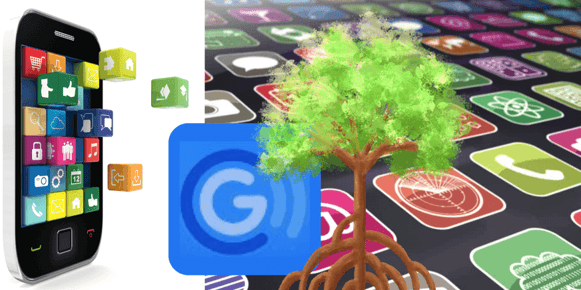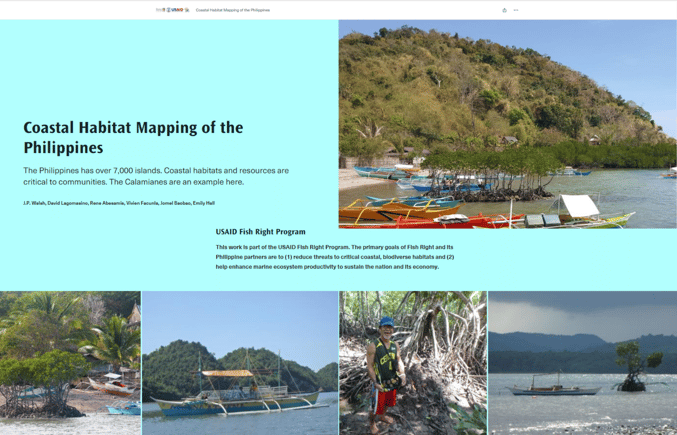Coinciding with International Day for the Conservation of the Mangrove Ecosystem, the mobile wallet app company GCash announced on July 26 its expanded GForest environmental sustainability feature, giving its more than 5 million users the ability to virtually plant mangroves in the Philippines.
The GForest Mangrove Rehabilitation Project represents an allied effort with the Culion Foundation and the USAID Fish Right Program, an existing partnership between the Government of the Philippines and the U.S. Agency for International Development (USAID), as well as the University of Rhode Island (URI) Coastal Resources Center, Resonance Global, and other local foundations and NGOs engaged in sustainable fisheries.
The aim of the initiative is to plant 125,000 mangrove trees in Culion, Palawan as part of the company’s ambitious goals to integrate sustainability into its core business.
With the GForest app, GCash customers can with ease direct accumulated ‘green energy points’ amassed by their own efforts to reduce their carbon footprint via online cashless transactions and services, to planting mangroves. Users can also rack up points every time they count steps running or walking if they enable GCash to access their health app or fitness tracker.
What Is The GForest Tree Planting app?
The GForest feature of the GCash app was first introduced in 2018 with an invite to users to convert points to planting “one tree at a time” to mitigate the effects of climate change in the Ipo Watershed, a biodiverse ecosystem and critical water supply to the city of Manilla. The project was made possible through a partnership with the World Wildlife Fund (WWF) and BIOFIN.

As reported in a 2020 Esquire article, Filipinos helped reforest 75 hectares of forest through millions of GCash Forest transactions. To ensure that the return of biodiversity and wildlife habitat to Ipo, the seedlings used for reforestation were sourced from within the Ipo Watershed, and networks of scientists and volunteers have continued to work on the ground to both plant and monitor reforestation efforts.
This same tree planting app feature will now allow users to apply accumulated credits for mangrove planting.
The ‘Growing’ Use Of Tree Planting Apps
GForest isn’t the only tree planting app on the market. In fact, there are literally dozens, many of them targeting specific regions or forest stands around the globe and some with more broad-based reforestation and conservation appeals.
Among some of the most prolific in terms of users and trees planted includes the AntForest gamified app, which has 5 million users and connects Chinese citizens, typically urbanites, with on-the ground networks of tree-planting efforts in rural Northern China.
The Trillion Tree Campaign is a UN environmental initiative launched in 2006. It’s Plant-for-the-Planet app aims to inspire and connect tree planting organizations across the world to plant 1 trillion trees. Users have several options including donating funds to tree-planting organizations, planting trees virtually, and even registering trees in their name or the names of loved ones.
Forest app is another digital tree-planting tool that is distinctive in that it relies on user focus, as measured by avoidance of smartphone distraction, to accumulate credits to plant trees.
In addition to apps, consumers can plant trees by visiting websites, using search engines, and even telling Alexa to “Grow a Tree” to donate $1 to One Tree Planted. In addition, several companies including Verizon and Dell Technologies have engaged in tree-planting efforts.
Samsung was a recent addition to efforts in forest landscape restoration (FLR), pledging to plant the “growth and conservation” of 2 million trees in Madagascar by the end of the first quarter of 2022, a goal the company has exceeded.
Avoiding FLR Greenwashing Through Best Practices
According to journalist Sarah Sloot, who examined the growth in use of digital tree planting apps and initiatives in FLR, tech companies investing in tree planting and reforestation are largely split into two groups: “Those who are putting corporate social responsibility dollars into trees and those with reforestation baked directly into their business models.”
Her recent article in Digital Trends reflects on the reality that although unintended, some projects may actually do more harm than good or may be prone to purposeful greenwashing by touting tree-planting to avoid serious commitments to more consequential actions, like reducing GHG emissions or ensuring sustainable supply chains.
Sloot details an array of assurances virtual conservationists might seek before engaging in virtual tree-planting to assess whether projects and organizations are adhering to best practices. These include the following metrics to start:
- Demonstrated commitment gauged by length of involvement
- Partnerships with enabling organizations
- Use of indigenous tree species
- Working with local ecologists and restoration specialists
- Ongoing monitoring
- Processes for community buy-in and guidance
As is the case with many sustainability monitoring requirements, there is growing effort outside of tree-planting organizations to increase transparency and ultimate project accountability.
Recently introduced platforms like Veritree use blockchain technology in coordination with those on the ground to monitor, manage, and verify project progress. Research helps, too. Consumers should take time to read about a company’s tree planting efforts to ensure project integrity before downloading an app, enrolling in a virtual reforestation program, or making a monetary donation.
GForest Mangrove Rehabilitation Project ‘Rooted’ In Partnership
Despite the boom in tree planting apps, what is unique to the GForest mangrove planting initiative is its reliance on yet another strong collaborative partnership to convert virtual user awareness and engagement to traceable action and proof of impact results in the Philippines.
In keeping with Sloot’s cautionary advice, the Fish Right partnership has deep roots tied to local involvement and is now expanded to include the local Culion Foundation. The reputation of these partners individually and collectively gives GCash users an assurance of integrity of both intent and practice.
For our involvement in this app-based mangrove FLR effort, Resonance touts its proven capabilities in building partnerships focused on natural resources, the environment, and sustainability, including sustainable supply chains involving small-scale fisheries in this region, as well as an expanding focus in reforestation initiatives. In addition, our company has also attained recent certification as a b-Corporation, holding our company to rigorous social and environmental standards.
The Importance of Mangrove FLR
Mangrove forests are critical ecosystems, providing local communities with fuel wood, timber, natural dyes, medicines and fisheries habitat. They are natural barriers that help to regulate floods, prevent erosion and saltwater inundation, and protect coastal communities against the severe impacts of storms. In addition, mangroves provide opportunities for tourism, education, cultural appreciation, and the fostering of local indigenous traditions and knowledge.
The Philippines has estimated mangrove forests of about 360,000 ha. Despite their protective role, these ecosystems are exceedingly vulnerable to the impacts of climate change, as evidenced by the scale of devastation caused by Typhoon Haiyan in 2013. In addition to the destructive effects on fragile coastlines, the magnitude of this storm resulted in the loss of 6,000 Filipinos and displaced more than 900,000 families.
A 2021 Sustainable Mangrove Management and Development Plan for the Calamianes Island Group, of which Culion is part, classified the mangrove forest as "fair to almost poor." The regeneration count of .37 per square meter is far below the ideal of 1 per square meter, and high rates of cut trees and dead trees have been observed.
The partnership between GCash, Fish Right, and the Culion Foundation will support the reforestation of these at-risk sites. The aim is to strengthen, through mangrove restoration, increased marine biodiversity and conservation, ecosystem resilience, and coastal protection against climate impacts in the region. The project intends to rehabilitate 50 hectares of mangrove forest covering eight barangays (small, local administrative districts) of the Culion municipality by December 2024.
Learn More: USAID Fish Right Mangrove Mapping in the Philippines
Among the array of resources on the importance of mangroves, the USAID Fish Right strategic partnership produced a StoryMap to demonstrate the value and process of mapping coastal habitats in the Philippines over time to examine changes and concerns.
The team was motivated to publish this interactive tool by the Tagbanwa indigenous people in the Calamianes Island Group. In their community of Calauit, they are striving for sustainability and to teach others about environmental value and stewardship. They host visitors to educate them about Dugong. In their teaching area, they have a large map (see below) of the coastal system that serves as a tool to help explain the importance of these habitats for the community and visualize the interconnectedness of coastal habitats. The Ensri Fish Right StoryMap expands this educational reach.



